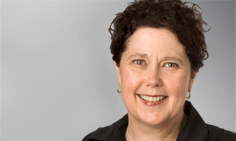THE focus when developing de novo clinical practice guidelines is necessarily on finding and interpreting the best evidence to underpin the recommendations made.
This means concentrating on the first three elements in the NHMRC methodology to assess the strength of the evidence — evidence base, consistency, clinical impact.
However, the outcome is that guidelines on the same topic and for the same end-users but developed in different countries generally look different, and use different terminology to describe the evidence base and the recommendations.
For instance, the same body of evidence for a recommendation reported in guidelines developed using different principles could be graded as hierarchy of evidence only, or could include an element of critical appraisal with the hierarchy. If the guideline is used only by its intended audience who are used to a particular evidence-presentation approach, then this is probably not concerning.
However, if others want to adopt the recommendations from an existing guideline into their own contexts, it poses a potential nightmare for new end-users. It also raises the issue of how many de novo guidelines the world really needs on the same topic, which generally reflect the same evidence base but describe it in different ways. The “elephant in the room” is how best to translate guidelines into improved quality and safety of care.
Such is the financial and opportunity cost, and physical and emotional effort of de novo guideline development that very few developers have the energy, finances or long-term policy support to follow a completed guideline through to implementation and evaluation; hence the need to make guidelines general and applicable.
My colleagues in the Philippines have developed and published a blueprint for applying Western world clinical guidelines to their developing country context. They did this because they didn’t have the money, skills or incentives to develop Filipino-specific guidelines and were committed to changing practice to improve quality and safety of care for all Filipinos.
The steps in their blueprint consisted of:
- mapping a “typical” patient journey (currently for four conditions — stroke, low back pain, neck pain or shoulder pain)
- identifying key decision-making points in this journey
- identifying good-quality clinical practice guidelines that had recommendations that could inform these key decision-making points
- using a standard process to summarise the various wordings of the recommendations, and the ways that the strength of the underpinning evidence base was reported
- applying a standard (clinician-derived) process to endorse each recommendation that reflected the underpinning strength of the evidence base.
The implementation process has been underpinned by a national baseline audit of practice, focusing on compliance with Philippine Academy of Rehabilitation Medicine-agreed essential recommendations for quality and safety of stroke care.
The approach has been endorsed by the International Society for Physical Medicine and Rehabilitation and now forms the standard for clinical practice guideline activities in developing countries.
An example of a cross-cultural implementation challenge is the strongly evidence-based recommendation appearing in all international acute stroke clinical guidelines— that of testing for a patient’s swallowing reflex before giving anything orally.
In Australia, this recommendation is a “given”, that it should occur for all acute stroke patients no matter where they seek medical care. This is underpinned by the assumption that all Australian health care providers dealing with acute stroke patients are aware of this recommendation and of the consequences of not following it.
However, in the Philippines, not all health care providers have the knowledge or skills to assess the swallowing reflex or deal with consequences. The Filipino recommendation highlighted the critical importance of this assessment; who should provide it and how, with a protocol provided for screening. It also recommended that all Filipino health training institutions recognise the importance of training to undertake this assessment in undergraduate curricula for nurses and allied health therapists.
The brave and novel work being undertaken in the Philippines will bring huge benefits to Filipino health care providers and patients as it puts the spotlight firmly on making evidence-based practice principles available to all. Other developing countries that follow the blueprint can focus scant resources on practice improvements.
This work highlights the immense value of addressing the challenging questions of making existing guideline recommendations generalisable and applicable in a way that will improve guideline uptake in local contexts.
Professor Karen Grimmer is the Director of the International Centre for Allied Health Evidence at the University of South Australia. She will speak on “Customising guidelines: consolidating best practice to take into account cultural requirements” at the National Medicines Symposium in Brisbane this week.

 more_vert
more_vert